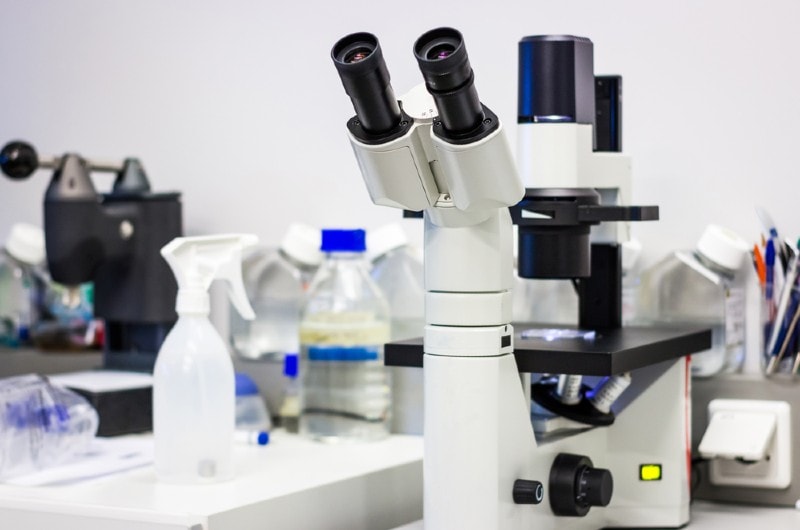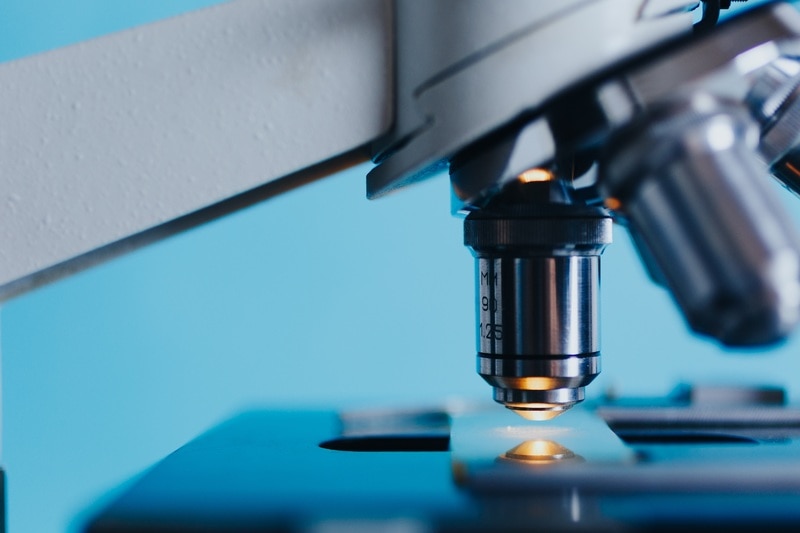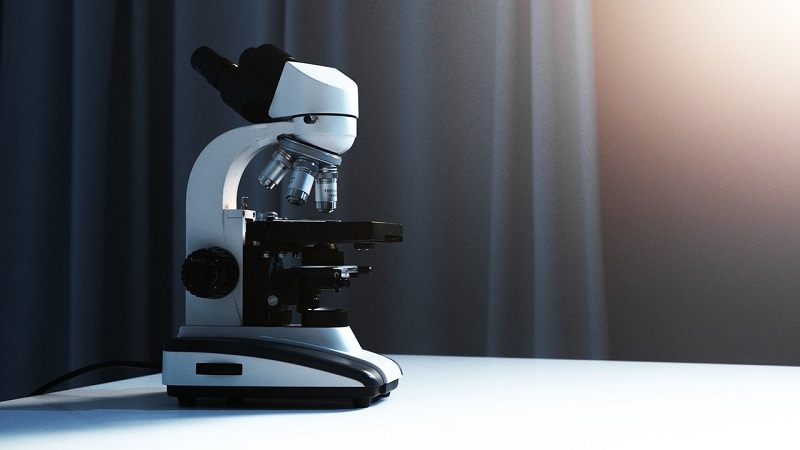What Are Light Microscopes & How Do They Work? Types, Info, Pictures & More!
Last Updated on

In this article, we’ll be going over some of the neatest pieces of science equipment: light microscopes. These are commonly known for their ability to see small objects that you wouldn’t normally be able to see. However, there are a lot of fascinating things you might not know about.
Take a look below to read up on how they work, the different types of light microscopes, their benefits in our society, and their shortcomings!

How Does It Work?
Light microscopes, also known as optical microscopes, were made to magnify any subject you can think of. Made of several parts such as the eyepiece, objective lenses, diaphragm, and stage, they use glass elements to reflect and warp light, creating a magnified image that can be seen with the human eye. The light source may be indirect through a mirror, or directly with a light illuminator.
Light microscopes have various magnifications depending on their combination of the ocular lens and objective lenses, but you can expect a typical light microscope to reach from 40X up to 1000X.

Using a Light Microscope
The first step in observing a sample is to place the sample directly in view of the objective lens and use the stage clip to hold it still.
Then, adjustments will most likely be needed in order to attain the correct focus. This is done by moving the small diopter dial near the eyepiece and by moving the stage up and down with its respective controls.
If you want to be able to quickly see your microscope’s overall magnification, check out the magnification formula for your microscope’s configurations. If you multiply the objective lens magnification by the eyepiece magnification (usually 10X or 15X), this will result in the overall magnification. The nosepiece may hold three or four objective lenses with various magnifications, such as 10X, 40X, 60X, or even 100X.
At this point, you should be able to see the subject in great detail!
What Are the Different Types of Light Microscopes?
There are a few types of light microscopes; bright field, phase contrast, fluorescence, and dark field. Each has a different way of attaining a final image, which we’ll quickly cover below.
Bright-Field
Bright-field microscopes are frequently called compound light microscopes, which work by imaging a subject with a background with lots of luminosity. This is the most common type of light microscope, and they are used widely by universities.

Phase Contrast
A phase contrast microscope makes use of phase shifting to process a viewable image. This is done by gathering scattered light and variations in amplitude. The light that’s gathered is at a certain wavelength, which gives color to the image.
Fluorescence
Fluorescence light microscopes are a bit different though, as a dye is used to increase the visible light that passes through the sample. The fluorescence comes from ultraviolet or blue light, but this of course alters the color of the final image.
Dark-Field
With a rather sinister name, dark-field microscopes are specifically made for examining the insides and shapes of larger cells. This type takes advantage of the condenser lens and a dark filter, also known as a dark-field stop. The condenser creates a stream of light that’s shaped like a cone directed onto the specimen.

Where Is It Used?
Light microscopes are commonly used by universities and research facilities to conduct studies on a variety of subjects, but they mostly have to deal with microorganisms like bacteria, and viruses, or to see what’s on the surface of something. These apparatuses are responsible for scientists and health centers to analyze and find solutions for deadly diseases too, so they are an important part of keeping us safe.
There is also photomicrography, a photography niche of individuals who create art by taking images of microscopic subjects; whether organic or inorganic. The sky really is the limit in photomicrography, as there are so many subjects to be documented. Many light microscopes have compatible hardware so that you can hook up a digital or film camera to get some unique shots.
And don’t forget high school—you might have already used one in biology class! Teaching youth about important subjects like microscopy can give them a chance to start a new hobby or become more interested in science in general.
Advantages of Light Microscopes

As they are compact, available, and affordable enough for even individuals to buy, light microscopes are the most convenient type of microscope that anyone can get in on. They have a decent magnification range that enables people to view many subjects. Compound microscopes are the best for this. As we mentioned earlier, they are also a vital player in studying dangerous viruses.
Disadvantages of Light Microscopes
Unfortunately, light microscopes can only do so much. Compared to electron microscopes, they are far less capable, as electron microscopes have a great deal of power. Light microscopes aren’t easy to find either, as you’ll usually have to buy one online or through a specialized dealer – if there are any near your location. Plus, this equipment can cost a decent chunk of your money, although the prices of microscopes vary depending on the quality of glass.
FAQ
Who Invented the Light Microscope?
Back in the 1500s, a Dutch scientist by the name of Zacharias Jansen built what’s considered the first compound light microscope.
Do Light Microscopes Produce Color?
All light microscopes produce color in their final image. This is because light inevitably has color – but it depends on the wavelengths and strength of the light. However, microscopy photographers typically edit their images using post-processing software to alter colors afterward.
What’s the Smallest Thing a Light Microscope Can See?
Most modern compound light microscopes are capable of observing specimens down to 500 nanometers. In fact, that’s about 200 times smaller than the width of human hair!

Final Thoughts
Light microscopes might see things that are extremely small, but they make a big impact on the way we view the world. There’s an entire expanse of subjects to be seen with a microscope, but these specifically take advantage of what we already have – light. We hope this informed you and potentially got you interested in getting your own light microscope, there’s so much to explore!
Featured Image Credit: Catalin Rusnac, Shutterstock
About the Author Robert Sparks
Robert’s obsession with all things optical started early in life, when his optician father would bring home prototypes for Robert to play with. Nowadays, Robert is dedicated to helping others find the right optics for their needs. His hobbies include astronomy, astrophysics, and model building. Originally from Newark, NJ, he resides in Santa Fe, New Mexico, where the nighttime skies are filled with glittering stars.
Related Articles:
Binocular Magnification Chart: Numbers & Distances Compared
When Were Binoculars Invented? History, Today & Future
How to Clean a Refractor Telescope: Step-by-Step Guide
How to Clean a Telescope Eyepiece: Step-by-Step Guide
How to Clean a Rifle Scope: 8 Expert Tips
Monocular vs Telescope: Differences Explained (With Pictures)
What Is a Monocular Used For? 8 Common Functions
How to Clean a Telescope Mirror: 8 Expert Tips
